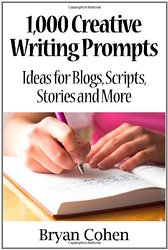The Versatility of Articles In Content Marketing

Case Study: Bryan Cohen: SEO, E-book Publishing, and Stardom
Case Study: How Stephanie Chandler Creates Authority Through Self-Publishing
There may be some confusion in content marketing circles about what constitutes an article, precisely. To be honest, it’s a catch-all term that applies to just about everything we do. An article can be published in a variety of media without changing or altering its basic form. Essentially, an article consists of four qualities:
- It is prose
- It is nonfiction
- It is organized logically
- It’s purpose is to convey some amount of knowledge on a particular subject to a well-defined audience
Notice I didn’t say articles conform to any particular length. Nor did I say that they are better suited to publish in certain media than in others. The reason I didn’t make those distinctions is because an article is not defined by length or by the media in which it is presented. An article can be as short as 100 words or as long as 10,000 words. It can be published in a magazine, an e-book, or on a blog. It doesn’t stop being an article because you’ve given it new form.
Why an Article Must Be Prose
Prose is what you are reading right now. It is distinctive in that it isn’t poetry.
All written communication can be divided into these two categories: Prose and poetry.
Poetry is a distinct form of written expression recognized by its rhythms and line breaks. That isn’t to say that it must rhyme or conform to an established metrical pattern. Much poetry written today is written in a style called free verse, which is poetry that does not conform to any particular metrical pattern and may not contain any rhymes. There is even a type of poem called “prose poem” where the rhythms established in the form are written in a style that is prosaic. It is still a poem.
In poetry, the basic unit of measurement is the line. A line may consist of metrical patterns, or what English and Language Arts professionals call “feet”. Prose, however, is not measured that way. In prose, the basic unit of measurement is the sentence. A series of sentences make up a paragraph. A series of paragraphs make up an article.
Pardon the English lesson. It wasn’t my intent in writing this post, but I want to provide the basics for understanding what an article is and the distinctions I’m making here are important. An article is not poetry; it is prose.
Of course, I’d also like to point out that simply writing prose does not mean that you are writing an article. Here’s why.
An Article is Nonfiction
Nonfiction attempts to present some version of reality.
Fiction, of course, is prose that tells a make-believe story. The events, the characters, and the descriptions are not real. They represent what takes place in the imagination of the author. They may be believable, or plausible, but the reader knows instinctively that what is going on within the narrative is all fantasy. It could be based on real events or real people, but the author is making it up.
Nonfiction, on the other hand, attempts to present some version of reality. Fictional techniques may be used in the telling, but the reader understands that what is being communicated is being represented as some version of “truth”, or “reality”.
But, again, a piece of writing presented as nonfictional prose, no matter how well-written, does not necessarily make an article.
An Article is Organized Logically
An article, in the sense that I am using the word here, is organized in such a fashion that the reader understands there is a certain logic to its layout and framework. Not all prose and not all nonfiction is laid out in a linear fashion, nor are all articles. But there must be some structure to the form that the reader can follow a line of reasoning and understand that the author is communicating something of vital importance to the reader.
The point of some nonfiction is simply to express oneself, much like what one does with poetry. A journal entry, for instance, may be a person unloading their thoughts on a subject without consideration for organizing those thoughts in any fashion. You might call it a “brain dump”. It that case, it’s still prose, and it’s still nonfiction, but there is no logical order of the prose. Therefore, I would not call it an article.
An Article Has a Primary Purpose
 The main purpose for an article is to convey information. That information can be something simple like how to ride a bike, or it can be something more complex like the molecular structure of DNA. It can be scholarly, humorous, conversational, or take on any number of other tonal qualities, but it’s primary purpose is to educate the reader on some topic.
The main purpose for an article is to convey information. That information can be something simple like how to ride a bike, or it can be something more complex like the molecular structure of DNA. It can be scholarly, humorous, conversational, or take on any number of other tonal qualities, but it’s primary purpose is to educate the reader on some topic.
Academics may define an article differently. I’m not concerned with nuances that go beyond the scope of content marketing. These distinctives should help you understand that an article is versatile in that it can be published through a variety of media, but in its versatility it is also limited in its mode of expression by the simple fact that the author is attempting to communicate some bit of knowledge she has and transfer that knowledge to her readers.
So, Where Can You Publish an Article?
 Now that you understand that an article is prose nonfiction organized logically for the purpose of communicating information on a particular topic with an audience interested in that topic, what can you do with it? Where do you publish it?
Now that you understand that an article is prose nonfiction organized logically for the purpose of communicating information on a particular topic with an audience interested in that topic, what can you do with it? Where do you publish it?
The answer is simple: Anywhere. Practically.
An article may be published in a magazine. It can be published online or in print. It can be turned into a book, published in a trade journal, posted on a blog, turned into a page on your website, sent out to your newsletter subscribers, or even turned into a Slideshare presentation. Some articles are converted into videos, and all you have to do is look into a camera and read your article to an audience. You can turn it into a podcast by speaking into a microphone and presenting it in audio form.
What you do with an article is a lot less important, in terms of marketing, than the purpose of the article itself. You are an authority. You have knowledge you want to convey to your audience. You write an article. If you want your article to be more effective, publish it in multiple mediums.
Long story short, if you want your articles to do their jobs, don’t just write them. Publish them.
 Are you ready to boost your authority? Looking for ways to expand your reach and deliver the best content for your niche audience? Download my free report, “14 Types of Authority Content“. Learn the 14 types of content that will keep your audience coming back for more and instantly make you an authority they can rely on.
Are you ready to boost your authority? Looking for ways to expand your reach and deliver the best content for your niche audience? Download my free report, “14 Types of Authority Content“. Learn the 14 types of content that will keep your audience coming back for more and instantly make you an authority they can rely on.


